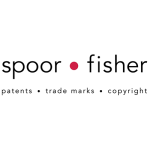Authorities in the African Intellectual Property Organisation (OAPI) have announced changes to the Bangui Agreement’s provisions relating to patents and utility models (annexes I and II, respectively). The new measures came into effect on January 1 2025.
OAPI is the regional intellectual property system that applies in much of French-speaking Africa. There are 17 member states of OAPI; namely, Benin, Burkina Faso, Cameroon, the Central African Republic, Chad, Comoros (except Mayotte), Congo, Equatorial Guinea, Gabon, Guinea, Guinea-Bissau, Ivory Coast, Mali, Mauritania, Niger, Senegal, and Togo. An OAPI patent or utility model application automatically covers all member states and it is not possible to designate the countries of interest.
The Bangui Agreement changes in brief
The changes to the Bangui Agreement relate only to annexes I and II, and the most significant points to note are as follows:
The changes only apply to patent and utility model applications filed on or after January 1 2025. Currently pending applications filed before January 1 2025 will be prosecuted according to the previous provisions of the Bangui Agreement that applied to patents and utility models.
Patent and utility model applications will be subject to substantive examination. OAPI patent examiners have been undergoing training in Cameroon and Ivory Coast. For OAPI Patent Cooperation Treaty (PCT) regional phase applications, it is expected that the examiners will rely on the PCT international search report and the international preliminary examination report when conducting a substantive examination. An examination must be requested within three months from a request from OAPI, and examination fees must be paid with any excess claims fees.
It is possible to file voluntary divisional applications at any time before grant, and in response to a substantive examination office action.
Patent and utility model opposition is now provided for and applications will be published for opposition purposes. Any interested party may oppose the issuance of a patent or a utility model application, within three months of the publication of the application.
Pharmaceutical product inventions – the World Trade Organization Agreement on Trade-Related Aspects of Intellectual Property Rights has extended the exclusion of pharmaceutical products from patent protection until January 1 2033 for ‘least developed countries’ (LDCs). OAPI member states that qualify as LDCs are no longer required to apply the provisions of Annex I regarding patents relating to a pharmaceutical product.
Non-PCT applications will be published within 18 months of the filing date or the priority date. All patents will be published upon grant.
New official fees for patents and utility models have been issued.
Any annuities that are due in 2025 but that were paid in 2024 will be subject to the 2025 annuity official fees. It is understood that OAPI will send out notifications informing the applicant/patentee of the shortfall.











